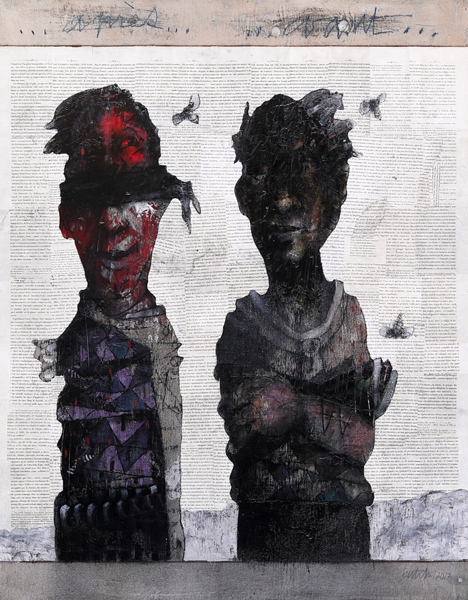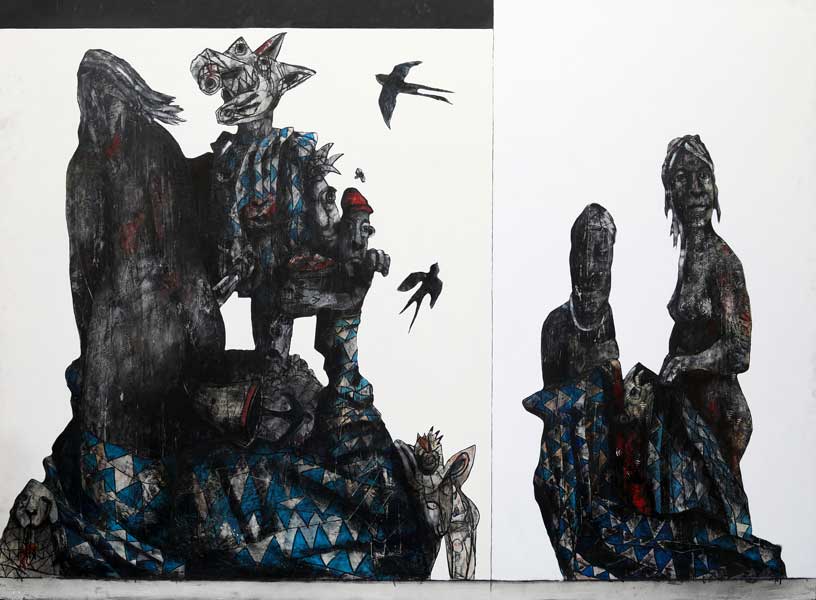Daniel Butcher


The abstract and sculptural paintings of Canadian artist Daniel Butcher reveal his fascination with hidden layers and the range of human expression within the materiality. In his early work, Butcher primarily worked with collage, using charcoal on paper to write poems and draw black-and-white images. He would then tear these pictures up and create abstract paintings. Employing the same technique, he made collages on large wooden panels. He continuously explored the technique of fresco and started to cover his surfaces with plaster to draw on.
For the past few years, Butcher’s interest has shifted towards figurative painting. His choice of materials and method still conveys a sculptural feeling and quality to the work. Behind every face, there are many other faces that appear and transform. The series #Visages can be read as contemporary portrait art. The identity of his anonymous characters develops through the painting process. By drawing, erasing and rubbing the surface, a person or a pattern will appear. In Butcher’s new works on paper, cities, and faces dominate the composition. Futuristic cities and landscapes, consisting of distinctive architectural motifs, ancient scripts as well as existing and newly crafted symbols are drawn from different cultural spheres but also from the artist’s imagination. The individual elements appear reduced in a form reminiscent of early civilizations’ attempts to articulate thought and wisdom.
His collages are characterized by a distinctive narrative. Dream-like images from distant places and cultures create a mysterious tale in Butcher’s paintings as they seem to contain secret messages. These images reveal a tangible connection to contemporary societies and can possibly be understood as sketches alluding to current global political and climatic changes. These wondrous pictures impose themselves on the viewer and offer fascinating insights into the creative journey of a visionary artist. Daniel Butcher’s works bear a poetic quality characterized by a unique artistic language and insightful intellectual notion. If paintings are an artist’s statement, then in Butcher’s case, meaning comes out of the process rather than preceding it. Thus, the artist is more interested in “doing” than in “saying”.